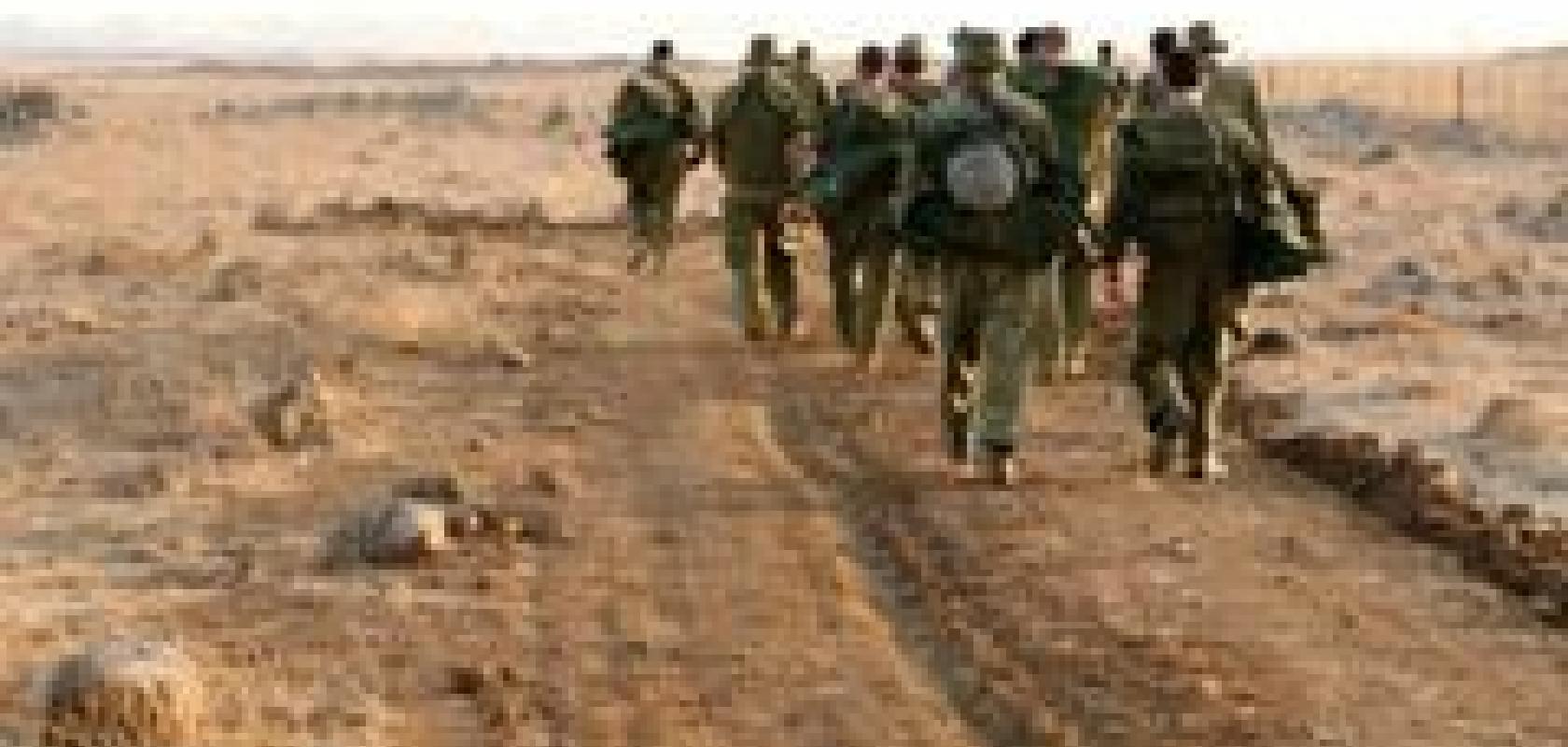Of the many considerations defence contractors must make when developing devices for soldiers on the battlefield, the so-called SwaP ratio, or size, weight and power of the device, is a crucial one. The device must continue to work even under harsh battlefield conditions – but, for any battery-powered instrument, there is a trade-off between maximising operational life and making it small and light enough for the soldier to carry. ‘The weight of equipment soldiers carry on the battlefield is a real burden,’ comments Marc Larive, marketing manager at infrared detector manufacturer Sofradir. He adds that the total load a soldier might carry could reach 40kg.
Sofradir has developed HOT (high operating temperature) infrared sensor technology, which potentially can reduce the size and weight of a cooled IR imager. Sofradir’s HOT detectors operate at a higher temperature compared to standard cooled IR sensors, thereby reducing the power consumption required to cool it. ‘A typical infrared detector has a power consumption around 4W, while HOT detectors use less than 2W power consumption, which is really important for designing a small system,’ states Larive. Sofradir’s standard focal plane arrays, made with mercury cadmium telluride (MCT) technology, operate at around -183°C, while the HOT Scorpio TV-format MWIR prototype, also an MCT detector, is capable of operating at -123°C and consumes less than 2W of power.
Handheld thermal imagers typically operate in the mid-wave infrared (MWIR), as the power consumption is less than for detectors operating in the long-wave infrared (LWIR). And soldiers still require the range and performance of cooled IR detector technology.
Systems used for the targeting and tracking system onboard fighting vehicles, such as main battle tanks for example, typically operate in the LWIR, however. Sofradir’s LWIR detectors are part of a fire control system, developed by Thales, for the Nexter VBCI, a French Infantry Fighting Vehicle. Sofradir’s subsidiary, Ulis, has also supplied detectors for the vehicle: its uncooled infrared focal plane array is used for panoramic observation onboard Nexter VBCI.
LWIR is well suited for fire control systems as it allows soldiers to see better through dust and particles than in the MWIR. In addition, the blooming effect is less in LWIR than in MWIR, an aspect which is especially important for fire control systems in tanks and other fighting vehicles. ‘An explosion or something very hot in the field of view can result in saturation of the pixel,’ explains Larive, adding that neighbouring pixels can also be affected to the point where a large part of the image is saturated for the duration of the explosion. This effect is less in the LWIR than the MWIR.
‘Military system developers want higher performance with a greater number of pixels without any significant increase in size of the detector,’ states Larive. ‘The previous generation of LW detectors [from Sofradir] had a pixel pitch of 30μm; current versions have a 15μm pixel pitch, so four times the number of pixels can be fitted in the same sized detector array. These new sensors have a higher resolution and can detect smaller objects further away.’
Eye in the sky
SWaP considerations are also important for drones and unmanned vehicles to minimise energy utilisation. A team of engineers from Middlesex University has developed a lightweight unmanned aerial vehicle (UAV) designed to give the soldier a bird’s eye view of the surrounding area via a live video feed. The device is small enough to fit in a soldier’s backpack and Dr Stephen Prior, who led the development team at Middlesex University, comments that the main goal of the project was to make the UAV small, light and robust, as well as keeping the cost down.
Dr Prior comments that the trouble with UAVs in general is that ‘they cost so much governments can only buy a certain number’. The Honeywell T-Hawk, for example, a vertical takeoff and landing UAV that’s thought of as relatively small and backpack deployable, will cost around £0.25m each, Dr Prior says. Middlesex University’s UAV, known as the SQ-4, is less expensive by a factor of at least 10, which means it can potentially be more widely deployed.

BAE Systems’ CV90 armoured vehicle covered with Adaptiv, a skin that can blend the vehicle into its surroundings in the infrared.
The system is around the diameter of a frisbee, weighs 230g, and can be operational in less than a minute. ‘Weight is the biggest driver for a small UAV,’ comments Dr Prior. The device uses a 1g camera system, which gives an approximate 60° field of view and reasonable resolution. The images are transmitted back to the operator via a downlink system.
There are two models, a basic model and a long-range version. The UAV is a short-range device, comments Dr Prior, not a fixed wing UAV; it is not meant to fly very far or fast. It is a vertical takeoff and landing system that operates around 1.5km for the long-range version and around 300m for the basic model. It’s used by the infantry unit to see what’s up ahead of them, scanning the area for people, vehicles, bombs, traps, or other suspicious activity. ‘Typically, once you’ve gone up 20 to 50m, you’ve got quite a good viewpoint of the battle space,’ Dr Prior states, ‘which is what is required.’
The UAV has a capability for low light imaging, but not a thermal camera which would make it too heavy. Dr Prior states that the imaging capability is acceptable: ‘It’s a short-range device; it’s not trying to look five miles down the road.’
The team at Middlesex University is currently in conversation with the MoD about getting the system into the hands of soldiers. The UAV was demonstrated at the Defence and Security Equipment International (DSEi) exhibition, held in London from 13 to 16 September, where it was flown around a representation of an Afghanistan village in one of the halls.
The soldier can control the UAV via the images transmitted to first-person view goggles. There are two cameras onboard: a forward-facing camera and a down-facing camera, which the soldier can switch between.
‘It’s all about scale,’ comments Dr Prior. There are lots of quad-rotor UAVs available in the range of 1kg to 3kg, which are all quite big, he says. If they are to fit in a backpack and be carried by a soldier, they need to be assembled and that assembly can sometimes take five to 10 minutes. ‘We wanted an immediate action system, which is small enough and light enough to carry around,’ he adds. Dr Prior feels that smaller devices in the range of 15g wouldn’t be robust enough to survive high winds or other hostile battlefield conditions.
Invisibility cloak
Much of modern warfare imaging operates in the infrared, because of the capability of detecting objects over large distances and the ability to see at night and through adverse weather conditions. Large-format infrared detectors, such as those produced by Sofradir, provide Megapixel resolution, while high-power infrared illumination devices, such as IR lasers from Frankfurt Laser Company, provide a range over several kilometres. Missile warning systems and the tracking systems for weapons also operate in the infrared.

The SQ-4 unmanned aerial vehicle, developed by a team at Middlesex University, is small and light enough for the soldier to carry in a backpack and provides a video stream for reconnaissance of the area.
BAE Systems, with support from the Swedish Defence Material Administration (FMV), has developed an ‘invisibility cloak’ designed to blend a military vehicle to its surroundings in the infrared wavelength range. The system, known as Adaptiv, is based on sheets of hexagonal tiles that can change temperature very rapidly. The cloak is therefore able to mimic the background infrared signature of the environment, effectively making the vehicle blend and become invisible to infrared imaging.
‘Adaptiv is essentially a large infrared TV screen that displays infrared images,’ explains Peder Sjölund, project manager, survivability technologies at BAE Systems. ‘For example, it can project the background infrared texture to blend the vehicle into the environment.’ Infrared sensors onboard the vehicle measure the background radiation, which is then displayed on Adaptiv.
Sjölund notes that infrared sensors have decreased in price to the extent that even military groups lacking substantial economic resources can purchase them for reconnaissance and surveillance.
The skin is composed of hexagonal tiles in a honeycomb structure. Each tile can be heated and cooled. A skin made up of around 400 tiles was used to cover the right chassis of a BAE Systems CV90 armoured vehicle at the DSEi exhibition in September.
‘The size of the tiles provides a high enough resolution to avoid detection, classification and identification at a combat distance down to 300m,’ comments Sjölund.

Adaptiv can blend an armoured vehicle to its surroundings, but it can also display other infrared images to disguise it, in this case a car. The left image shows a view of the armoured vehicle with Adaptiv switched off, while the right image shows the vehicle disguised as a car.
Adaptiv can also be used to avoid friendly fire. ‘You can light up very quickly different types of identification tags on the vehicle,’ says Sjölund. ‘If you’re 3km from your own forces in poor weather conditions, it would be difficult for them to identify you as a friendly vehicle. But with Adaptiv, you can light up identification marks to alert your own troops. You can even type letters, for instance.’
The cloak can also be used to identify the vehicle to friendly forces in one direction, while remaining hidden to the enemy in the other direction. Identification marks can also be displayed on top of the vehicle. ‘In the future, the biggest threat will probably be from the air, mainly from unmanned aerial vehicles, which are often equipped with highly sensitive detectors,’ Sjölund says.
Any type of infrared camouflage pattern Adaptiv generates can at the same time contain encrypted information that can be decoded by friendly forces. Sjölund explains that friendly forces will be able to read the encrypted information from the infrared images, while the vehicle remains hidden to the enemy. In situations requiring radio silence, for instance, Adaptiv can still be used as a means to communicate between troops without revealing their whereabouts with radio signals. ‘It’s a passive way of communication,’ he says.
The infrared signature is dependent on the weather and terrain. In an arctic environment, a vehicle stands out more because the infrared background is relatively homogeneous compared to in a jungle, for instance, where there are large deviations in the background radiation. Adaptiv can copy these deviations and even blend into more inhomogeneous infrared backgrounds, which Sjölund says, is typically more difficult to do.
The researchers at BAE are also working to implement protection from radar surveillance with a technology integrated into the tiles that absorbs radio waves. Radar antennas commonly operate by both emitting radio waves and collecting the part bouncing back from objects to determine their range, direction and speed. This masking technology absorbs portions of the radio waves resulting in less radiation scattered back to the source and thereby reducing the radar cross-section.
‘We have also started working on the visual spectrum,’ states Sjölund, by changing the colours on the tiles to blend the vehicle into the background. This involves attaching screen technology on each tile to add active camouflage capability in the visible spectrum.
‘With the addition of upgrades to cover radar and visible spectrums, Adaptiv will cover most of the spectral wavelengths used by threat sensors,’ Sjölund states. ‘The idea is to combine these technologies into one system.’


